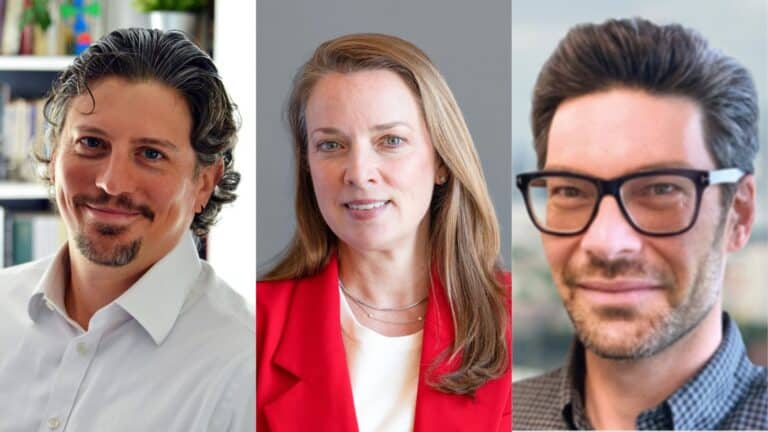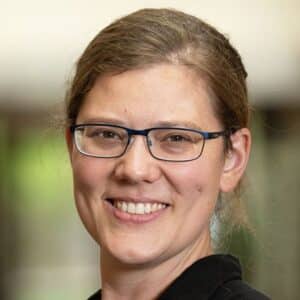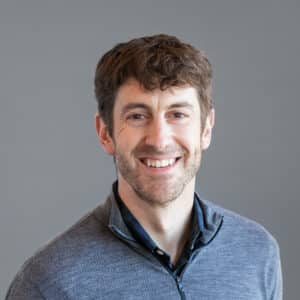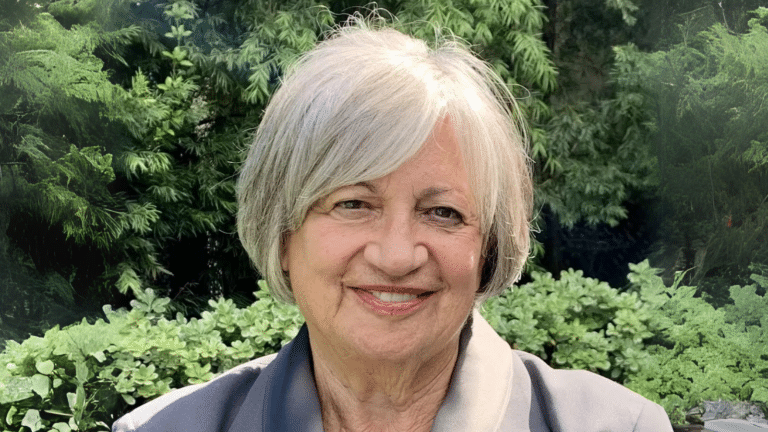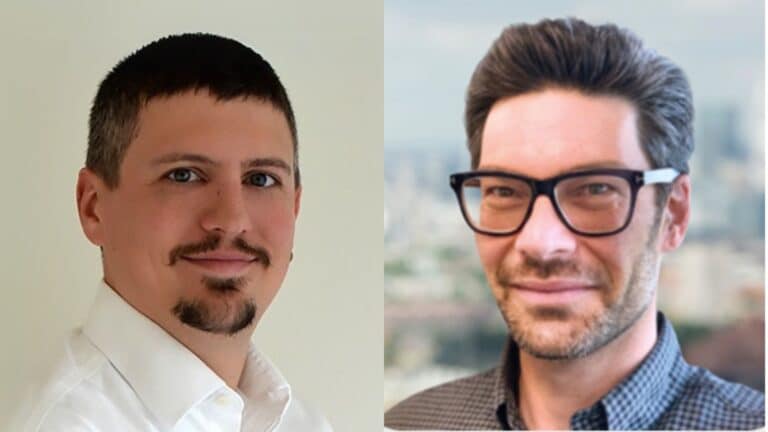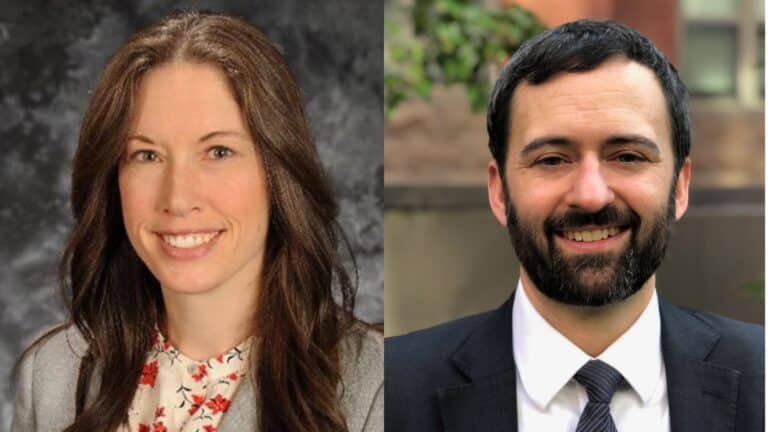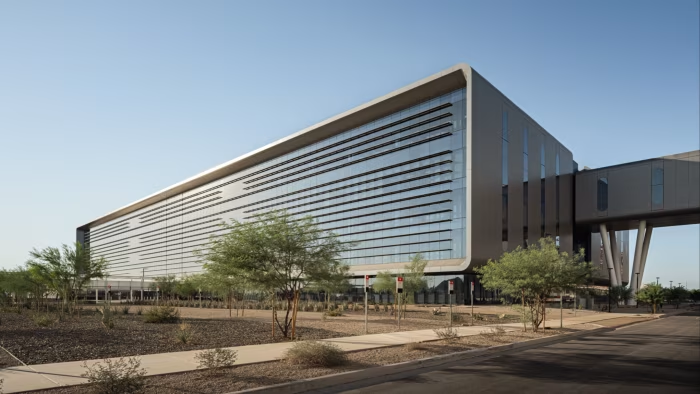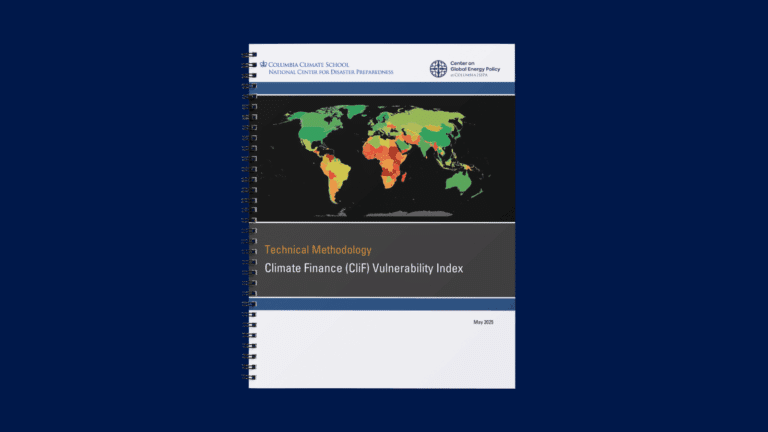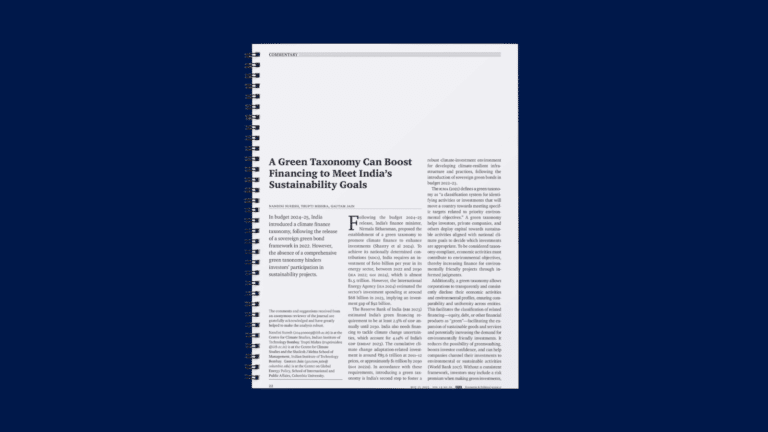Noah Kaufman: We have thousands of communities across the United States that depend on fossil fuels, and we really need viable economic strategies for these communities if we want any hope of sustaining progress on climate in our country.
Emily Grubert: When we look to historical evidence about what happened when the steel industry collapsed, what happened when the textile industry collapsed? We know that not planning for it doesn’t work
Bill Loveless: When it comes to the clean energy transition. Policy decisions are often made in boardrooms and congressional offices far removed from the communities they impact in the U.S. Some towns rely on money from conventional energy production. It supports local schools, for instance. Without a well considered strategy, fossil fuel dependent communities aren’t positioned to thrive in or perhaps even survive the clean energy transition. So what steps are being taken to increase economic resilience in fossil fuel dependent communities are the near term risks and economic impacts these communities face underappreciated. And what does this all mean in today’s political environment?
This is Columbia Energy Exchange, a weekly podcast from the Center on Global Energy Policy at Columbia University. I’m Bill Loveless. Today on the show, Noah Kaufman and Emily Grubert. Noah and Emily are two leaders at the Resilient Energy Economies Initiative, a collaboration between the Bezos Earth Fund Resources for the Future, and the Center on Global Energy Policy at Columbia University.
Emily is also a civil engineer and an environmental sociologist who studies how we can make better decisions about large infrastructure systems like the US Energy System. She’s an associate professor of Sustainable Energy Policy in the Keo School of Global Affairs at the University of Notre Dame. She also worked in the Office of Fossil Energy and Carbon Management at the Department of Energy under the Biden administration. Noah is an economist who has worked on energy and climate change policy in both the public and private sectors.
He is a research scholar at the Center on Global Energy Policy. He also served as a senior economist at the Council of Economic Advisors under President Biden, and as the Deputy Associate Director of Energy and Climate Change at the White House Council on Environmental Quality under President Obama. We talked about the work of the Resilient Energy Economies initiative in support of an energy transition that is both economically viable and socially equitable. We discussed their research and some of the 22 research projects that the initiative is funding designed to help fossil fuel dependent communities navigate an uncertain future. And we looked at this problem through the lens of the current administration, which is increasing support for oil and gas development. I hope you enjoy our conversation. Emily Grubert, welcome to Columbia Energy Exchange and Noah Kaufman, welcome back.
Emily Grubert: Great to be here.
Noah Kaufman: Thanks for having us.
Bill Loveless: Well, I’m looking forward to the conversation. Emily, this is our first time having you on the show and we’re delighted to have you here to learn a little bit about yourself. You’re a civil engineer and environmental sociologist and a professor at Notre Dame. How do you combine those experiences and the work you do on energy and climate?
Emily Grubert: Yeah, I think one of the things that has been a real defining feature of the way that I’ve kind of constructed my academic profile and just a lot of what I work on is just a real hunger for more methods to learn about energy systems. And so I think I come at this very topically. I care about energy, I care about the energy transition. And so when I was seeking out training, I was kind of looking for all the methods that would help me get at some of these really critical questions, especially as we’re talking about basically remaking the energy industrial system for climate reasons and for justice reasons over the next couple of decades. So for me, I think it’s always kind of been about the topic and I’ve just tried to find as many ways to get at it as I can.
Bill Loveless: And Noah, you’re an economist whose work on resilient energy economies is just part of your broader portfolio at the Center on Global Energy Policy. Remind us what you do there.
Noah Kaufman: Sure. So I’m a senior research scholar at CGEP. Like you said, I’m an economist. I work on climate policy, long suffering New York Knicks fan. But yeah, more recently have been very focused on this issue working with Emily and others on developing viable economic strategies for communities around the country that depend heavily on fossil fuels.
Bill Loveless: Yeah, the need to support fossil fuel dependent communities in the United States. It’s not a new consideration. It’s been discussed and addressed to one extent or another for years. But Noah, can you give us some background? Why is this such an important issue?
Noah Kaufman: Sure. I mean, we have a growing network now of folks working on this, and I think people come at this topic from very different perspectives even within the network. So a lot of folks are on the ground in these communities working on local economic development because they want to see their communities flourish into the future, which makes all the sense in the world. For me, I sort of come at it from a climate policy perspective and in my view, we have thousands of communities across the United States that depend on fossil fuels for public revenues that fund the schools for jobs that are in many cases high paying. And we really need viable economic policy for these communities if we want any hope of sustaining progress on climate in our country. The analogy I tend to use for climate policy folks is I think it’s conventional wisdom at this point, at least, that the great progress that we’ve made over the last couple of decades on solar and batteries has really made climate policy a lot easier to imagine in this country because it’s going to be cheaper because clean energy is a lot cheaper.
And I would say in contrast, we really have not made much progress at all when it comes to these fossil fuel dependent communities, which again, often have the kids go to schools and they’re funded on the backs of the tax revenues paid by these communities. So I think it’s not surprising that the people in these communities and their elected representatives and even friends and families and other communities aren’t going to support policies that try to move these communities beyond fossil fuels until we really sustain efforts to try to successfully diversify these local economies. So that’s what we’re trying to do with our work.
Bill Loveless: And I want to dig into that much more project organizers. You, Emily, others say there’s only scant evidence on how to increase economic resilience in fossil fuel dependent communities. Emily, what’s available now in terms of evidence, in terms of information and what’s missing?
Emily Grubert: Yeah, I think one of the things that I tend to look for is where we have evidence that we might not be able to spot if we’re not looking for it from the right lens. And so one of the places where I think we have a lot of evidence is about things that we know don’t really work. And that sounds a little bit negative, but I think it really opens up the space for thinking about what might. And what I mean by that really is we’ve seen big industrial transitions many times. This one is bigger because we’re talking about remaking 80% of the world’s energy system and about 80% of the US’ energy system as well. This one is also probably more embedded in critical services that are important to keep going, to keep people safe and all those kinds of things. But it’s not the first time we’ve had an industrial transition.
And so when we look to historical evidence about in the United States what happened when the steel industry collapsed, what happened when the textile industry collapsed, all these kinds of things, we know that not planning for it doesn’t work. And that sounds like, oh, we’ve tried one thing that doesn’t work. What might work? Well, we probably have a good sense that planning might work better. Similarly, I think we have a lot of evidence that sort of letting communities flounder on their own, trying to figure out what’s going to happen next is not that effective, especially because you don’t necessarily have the ability to create learning networks across communities that might be facing the same types of things. Given that we probably know that trying to do those sorts of things will work. And I think what really stands out to me about the evidence that’s out there is the kinds of things you hear from people within these communities, not just the fossil ones, but also when we consolidated passenger train service, when we looked at steel, a lot of these past events have really carried a lot of context where people have been saying, if you gave me a couple of years heads up, if you gave me some other opportunity to really think about what kinds of development activities I could actually have in my town, these kinds of things.
There’s been a lot of lessons learned that we’ve sort of forgotten sometimes. And so I think we’re really in a space where we have the opportunity to try some things that are different from what’s happened in the past. But yeah, unfortunately not a whole bunch of really, really great examples of very long-term success. But I think we’re in a place where we’ve learned enough from some of the past failures that we have a really good idea of which way we need to go.
Bill Loveless: You each talk about the energy transition, and this project is based on the premise that world leaders are committed to a transition away from fossil fuels. It says so in the literature from the project. But that’s not the case now in the United States where the Trump administration has taken a drill baby drill approach to policy. Some might ask Noah, is this project out of step with the times?
Noah Kaufman: I would take issue with the question just a little bit in the sense that I think that building economic resilience has always been important in these fossil fuel dependent communities that experience booms and busts when the prices of oil rise or fall. Emily and I were in Western Colorado last year and everyone’s still talking about Exxon pulling out in the 1980s and the local depression that resulted because of it. So I think this is important, and this topic resonates with people in communities beyond just for the reasons of the energy transition. But at the same time, climate risks are still very real and very scary and aren’t going away. So for both of those reasons, I think the topic is still important. And frankly, I think just the fact that our country just elected a president and a Congress pledging to get rid of our climate policies illustrates why this work is so needed. Because what I was saying earlier, I think it is just a huge barrier to gaining acceptance for these types of policies in a country like ours.
Bill Loveless: Emily?
Emily Grubert: I think one of the things that’s really visible about energy transitions to date is that we’ve seen a huge amount of upheaval in fossil dependent communities that’s been essentially not policy driven at all. We’ve really never had a coherent climate policy in the United States. We’ve had a lot of voluntary efforts to move forward. We’ve had subsidies, things like this, but we’ve never really had a situation that says, you must close any of these. And yet, coal production in the US has dropped off by about 50% in the last 10 or 15 years. Almost all of those companies have gone bankrupt. We’ve seen years and years and years of companies essentially discharging pension obligations, remediation obligations. So the main point I think here, as Noah said, is we can either succeed at climate stuff or not. I think we’re not succeeding right now, but not moving forward to really think about what this energy transition needs to be is not going to help us get closer to solving this issue.
And there are so many transition issues that go far beyond the climate policy pieces that I think this is actually really important for me as a civil engineer. I think one of the ones that really stands out is the safety implications regardless of what you think policy wise. And I happen to be very much on the like, yes, we need to close these things in a way that actually preserves people’s ability to have opportunities to thrive and all of those things because we need to reach a climate neutral status. But even without that frame, we know that the infrastructure that we have in the United States is aging. We’ve been industrialized for a long time, and so a lot of our fossil infrastructure is 50 or a hundred years old. That’s the kind of thing that in high hazard industries like the fossil ones, you see explosions, you see accidents. We need some way to think about how to close these things just because they’re old and also because we need to move forward for climate change reasons.
Bill Loveless: Well, let’s talk about some of the 22 research projects in the United States and Canada to help fossil fuel dependent communities navigate an uncertain future. There are great illustrations here as I read through these projects. I’d like to hear from you, Noah on that. And then Emily, some of the projects that you guys are engaged in that some of your colleagues are working on, Noah.
Noah Kaufman: Sure. Yeah, no, I could talk all day about the great scholars that we’re working with now. So yeah, just so it’s called the Resilient Energy Economies Initiative, and really so far what we’re trying to do is two things. We’re trying to build up a community of scholars and policymakers and practitioners who are working on this topic. And the second thing, as you said, is to fund research. And all of the research is tied together by this general topic of supporting viable economic strategies for fossil fuel dependent communities. But there’s a wide range of projects within that scope. So some are very specific case studies. We have Anne Junod, who is looking at a policy in Washington state that is geared towards a big coal plant that is shutting down there and trying to support the community affected by that closure. And she’s rigorously evaluating the success or lack thereof of that program.
Other projects are sort of broader nationwide data sets. So we have Eleanor Kraus at the University of Kentucky is looking at what is happening to coworkers that have been losing their jobs over the last 10 or 15 years with an eye towards what can we do to support those workers? And then maybe the third category that I’ll call out, we have groups of scholars looking at just what are holistic economic development strategies for different fossil fuel dependent regions of the country. So we have a group of folks in Wyoming looking at strategies for Wyoming, a group of folks looking at New Mexico, the Central Valley in California. Again, I could go on and on, but a lot of exciting work that’s now ongoing.
Bill Loveless: Yeah. And Emily, you’re involved in a project I read involving a worker and host community experience with fossil plant closures. Tell us about that project and some of the other ones that you keep an eye on as well.
Emily Grubert: Yeah, absolutely. And echoing. Noah, I think it’s really exciting to see the kinds of work that we’re attracting with this initiative, and we’re really excited to see what else we can support going forward because this is such an important thing and impactful thing to work on. My particular project is focused on whether there are some ways that we can kind of cleverly get at some of the impacts of planning on successful outcomes. I think one of the challenges with doing work on planning in particular is that without longitudinal studies, it’s a little hard to tell whether your intervention has been successful. We don’t really have time to do a 10 or 15 year study of whether one particular approach works and then try a next one in those kinds of things. We’re really talking about, at least on the electricity side, needing to transition this whole system over in the next 15 years or so.
I think maybe even faster would be preferable. And so what my project is trying to get at is to look at a couple of different power plants that have closed or have been planning to close with different timeframes that have been announced to the community before that’s happened. So looking at what happens when a plant closes with essentially no notice, maybe a couple of months or so, looking at plants that maybe have given a heads up to their communities that they’re going to close within a year or two. And then looking at plants that maybe for policy reasons or other reasons, have more like 10 years of notice going forward. And just trying to see what is the sweet spot in terms of planning. I know I had worked several years ago in a situation in Australia actually, where one of the big issues in this community was whether they were going to allow gas drilling to happen.
And I think one of the things that I really took away from that, that I’ve brought to this project now is there was a massive, massive rift in that community just because people couldn’t really decide what to do next. It turned out at the end the project was canceled and not really for any community input reason, they just didn’t do the project. But there had been so much time, a sort of decade scale time of people debating this and trying to think about what their future was going to look like that people had really ended up in these very calcified positions that were quite damaging to the community to the point that people were giving each other death threats. There were certain sandwich shops that you would go in if you were on one side of the issue and others where you would go in on the other side of the issue all for a project that never happened. And so I think what I’m trying to get at with this is sort of too little time is not good. Too much time also might be not good, but probably having some amount of space to think about what’s happening next is pretty important.
Bill Loveless: Do you come out of this with clear impressions at this point of what has worked effectively and what hasn’t? I mean, do you have some observations that are already useful to you to pass on to some of these communities or is it still requiring so much more research to really get a hold of it?
Emily Grubert: That’s a great question. I think I tried to dispense with my typical academic response of all was we need more research, we need more data. There’s some situations where we don’t, right. One of the kinds of situations where we don’t need more research and more data is that in order to meet climate targets that are consistent with international goals and with some of the goals that we’ve had at the state level and even at the national level in the past, we need to close all of our fossil fuel fired power plants. We don’t really need more data to know that that’s true with the community stuff. I think one of the things that we absolutely know is that people have particular services that they depend on and need in order to thrive and in order to feel safe in their communities. Things like healthcare, housing, the ability to buy food, the ability to send your children to school, these kinds of services are the types of things that people are worried about when they lose a big anchor tenant essentially in their communities. And I think there’s a lot of disagreement and lots of good ideas about how to provide those things, but I think at the end of the day, we don’t necessarily need a ton more data to know that those kinds of things are the things that people are looking for. Just the ability to be in your community and feel like you’ve made a life for yourself where you can actually provide for your family and yourself.
Bill Loveless: Well, Noah, given your understanding of a need for a transition, as Emily just pointed out long-term, an understanding among many, obviously that reliance on fossil fuels in in terms of climate change and all, I mean that you feel that strongly. How do you carry that belief with you as you talk to these communities to do research into how dependent they are, understandably on fossil energy production for their local economy? They must be scared thinking this power, this coal-fired power plant could close as have many over the years. What do I do then?
Noah Kaufman: I think the main thing we do – when we go to these communities – is listen, because they don’t want to be told, here’s what your strategy should look like. And they’re the ones who know best what the challenges and opportunities are for their given region. So I think one of the problems maybe that we’ve had in the past is sort of suggesting top-down solutions and maybe offering what seems like meager handouts to these communities in exchange for giving up on their way of life. So I think going in from sort of a humble perspective, like the facts are the facts, but we’re here to help in any way that we can has been our approach. And I do, I want to underscore something Emily said earlier. It sounds intuitive or obvious to say that we have to actually try to support these communities and not trying hasn’t worked, but it’s so critical because really that has been our strategy for the most part to a first approximation. And in my community of economists, economists have been really skeptical of these types of policies to support struggling places, not because economists are heartless, but because economists just prefer to support struggling people wherever they are and maybe provide support for people to move to more productive places.
That tends to be the reason economists haven’t focused on this issue. Policy makers haven’t focused on this issue because it doesn’t sound good. Policymakers even focused on climate would much rather talk about the exciting opportunities of deploying clean energy, not how do we get out ahead of huge risks to fossil dependent communities. So I think this is starting to change, and there’s a few reasons for that we can go into if you want, but really just sort of the realization that we need to help is I think not obvious. And now that we’re there, I think it’s exciting. Now we can move forward and say, okay, what should that help look like? And I do think it’s very early days and it’s going to be so dependent on what a given region wants and needs.
Bill Loveless: Yeah. You wrote in a publication called The Conversation recently that quote, oil and gas communities are a blind spot in America’s climate and economic policies. I think that’s what you were just getting at. But was it?
Noah Kaufman: Well, I mean, as we dig into the details of what these sorts of policies could look like, to the extent that they do exist so far, they tend to exist in coal dependent communities. And for the reason for that is, as Emily described earlier, coal production has been falling in the United States for almost a couple decades now. So the need for support is just, it hits you over the head because you have communities in Appalachia, like Boone County, West Virginia has three elementary schools shut down when coal production falls, and you know that they need support and the type of support they need looks a lot like places going through recessions and need stimulus. I think it’s not as obvious with oil and regions, at least some regions across the country where oil and gas production is booming. So these local economies, at least in the research I’ve done, they mostly have outperformed the national economy over the last couple of decades. And yet again, if we’re serious about the energy transition or just if we’re worried about booms and busts in these regions for other regions, we should be preparing now for the economic pain that could come in the future, particularly because the resources are there to prepare for it now. So I was just making the point in that article that there is this opportunity to get out ahead of these problems, and with some exceptions, we don’t seem to be taking advantage of that.
Bill Loveless: Yeah, I was thinking Emily, there have been, getting back to the point you were making on the old coal communities and that Noah just reiterated there, local governments, economic development agencies and others have worked on building economic resilience in these communities where coal mines and coal-fired power plants have closed. Can you give us some examples of what’s been done and what’s been effective?
Emily Grubert: Yeah, that’s a good question. And without being too cynical, I need to pull back and think a little bit about what I think has been effective. I think one of the things that we do tend to see is that to Noah’s point, getting out ahead of this is much easier than responding after it’s actually happened. So if you wait for the plant to close, you’re probably too late. And I think also to the point about why do we care about oil and gas now the oil and gas industries are much bigger than the coal industry, vastly much bigger than the coal industry. And right now there’s still some money in those systems. There’s still some prosperity in those systems waiting for that all to crash and then basically recovering it with taxpayer money on the backend is probably not going to be a particularly effective or humane way to deal with this.
I think I also want to say just before getting into some of what actually has been effective in coal communities, a lot of people are pretty skeptical of the idea that these communities merit particular support. I think partially because of these reasons in terms of resourcing and all this sort of thing. And I think the argument that I hear from a lot of people is, well, they’ve been outperforming other parts of the economy for years and years and years. They’ve had this massive wealth influx from this resource and have had many, many years to recognize that because of climate, other things that there’s probably a transition coming. If they didn’t plan, why should we bail them out? And I think that one of the things that I always come back to is, first of all, this is why I tend to be more supportive of universal programs.
If we’re talking about trying to make sure that people have access to healthcare that’s independent of the big local economy, I think that should be for everybody. But also I think particularly because these kinds of systems failing pose really big risks to the rest of the country as well. If you have the systems that provide you with energy and prevent you from diving into blackouts, prevent things from exploding, you actually do need to be kind of attentive to how those wind down. And so with that background in place, I think a lot of the efforts that have been made already have really focused immediately on revenue replacement and maybe switching people around work-wise. So we’ve seen some utilities in particular say, we’re going to close this plant and move those workers to a different plant. Things along those lines that are, I think, kind of helpful at the really small scale and can be quite useful for those particular workers.
They’ve tended to be, I think, less effective for the host communities, and they’ve tended to be less effective when you start thinking about full retirement of the system as opposed to sort of marginal retirement on the edges. But all that said, I think what we’ve seen to date, plants don’t last forever. And with a lot of the closures that we’ve seen, it’s mostly because they’ve reached end of life. When you build a power plant, you expect it to last for 30 or 50 years. It’s not a surprise when a 70-year-old coal plant is shutting down. And so the fact that a lot of the effort that has been put into that has sort of been, well, we’re going to be winding this plant down. Here are some places where the workers can go next. That’s pretty typical of small scale plant turnover in other industries. And that’s largely, I think what we’ve seen to date.
Bill Loveless: Yeah, it seems like an easier case to make when you’re talking about coal power plants just given their expected lifespan and that many of them are that old now and are due to, are scheduled to go offline. It seems to be a much hotter thing to wrap your mind around if you’re in a community where — in Texas, for example, where oil and gas production is booming and there may not be the anticipation that someday that may not be happening anymore and they will need to consider a transition. Right.
Emily Grubert: It’s interesting. I’m not sure I agree with that actually for a couple of reasons. One because, well, if we’re talking about power plants, gas plants tend to last less long than coal plants. They reach end of life a bit earlier just because of the way that they’re built. So on the power plant side, there’s I think some element there. On the actual production side though, and positionality statement, I come from several generations of California oil people, and I think growing up in that environment, what was always very clear to me, it’s like, this is a depletable resource that the oil is not going to be there forever. I was born in Bakersfield, which is one of the only oil production areas in the country that’s really been going on for like a hundred years. But for oil and gas, people I think are a little bit more used to the idea that the resource actually will be depleted in a particular place.
Coal mines in historic context have tended to be that single anchor thing that stays in the community for many decades and many generations of workers, oil and gas, especially after the shale revolution, we understand decline curves. We understand that the boom bust cycle is there. And so I think that in a lot of those kinds of host communities, there is a much greater understanding that this is fairly temporary. Maybe you have a technological breakthrough or a price breakthrough that means that your resource is actually available again. But I think oil and gas people are a bit more used to the idea that this might just be a decade or two decades, things like that, and that you move around. And I think that we see that actually in the workforce too. Oil and gas workers on the production side are much more accustomed to moving than coal workers in particular. So I get your point, and certainly that the industry is not in as dire of straits, but the way the resource works is quite different too.
Noah Kaufman: What we found in our research, which I think is not surprising, is that the level of economic diversity that you have in a given place matters a lot for the economic outcomes when major employers leave. And I think this is relevant to this point because a lot of times places with power plants tend to be, not always, but a lot of times they’re in places that have population centers with other businesses, and sometimes public utilities can take the workers there and move them to other facilities. Actually, we have a project being led by Mark Curtis and Jisung Park looking at exactly that issue and how policies could be designed to encourage that sort of thing. But in contrast, places that have coal mines tend to be much, much more rural areas without a lot of economic diversity. And these are the places that when the dominant employer goes away, there’s often not something to switch to. So I think that’s another reason why production areas might struggle more than power plant communities.
Bill Loveless: Now you talk about something called climate policy sequencing. I think I understand what the term means from having spoken to you a little bit about it before, but it’s an interesting one. It comes in the context too, of comments you’ve made on the social media platform X recently where you say, quote, we focus too narrowly on replacing dirty energy with clean energy. Clean energy rarely replaces the jobs and public revenues from dirty energies. What do you mean by that?
Noah Kaufman: I mean, I think that the policy sequencing is that unnecessarily fancy way to try to make the point that I was making earlier about the need to take actions so that when you implement climate policies, they are not as much of a burden as they might have been otherwise. So I was making the point earlier that if we implemented strong emissions reductions policies 20 or 30 years ago, say in the power sector, they would’ve cost way more than they do now because we didn’t have the cheap alternatives that we do today in terms of solar and wind. So the analogy here is to say similarly to bringing down the cost of solar and batteries, if we can take actions to first help these communities diversify their local economies and see economic opportunities that should lower the costs of any given climate policy and at least make it less daunting. It’s not necessarily the solution. I just think it’s hard to imagine a climate policy solution if we don’t take those types of actions in advance.
Bill Loveless: And I think, Emily, that’s what you were getting at as well, right? In talking about some of the communities that you’ve examined, some of the coal communities
Emily Grubert: To some extent, I think one of the things that I keep coming back to is how do we do this as fast as possible? Because I think the more time that we spend in this sort of middle space, this is some work that I’ve done that I’ve kind of referred to as the mid transition period where you basically have a fossil infrastructure and also a clean infrastructure. Neither one is big enough to do everything, but they’re both big enough to impose costs on each other. You want to get through that as quickly as you can, and in order to get through that as quickly as you can with as little harm both to people that are affected by ongoing climate change and air pollution from these kinds of activities and from the decline of those activities themselves, I think the sequencing is super important, but it needs to be done quickly. And so I think this really comes back to why I tend to focus on service first, just like how do you make sure that people have healthcare, have education, have some ability to basically fulfill their needs? And then, yeah, I think that the economic diversification piece of this is incredibly important, but I also want to make sure that we don’t wait until everywhere is really fully diversified before we can move. And that’s really, really hard. And that transition probably is expensive. It’ll be more expensive the longer we wait.
Noah Kaufman: One success story that people often point to is this place in Germany, the Ruhr Valley that used to be heavily coal-industry dependent and has started the transition away and really hasn’t seen at least the degree of catastrophic consequences that we’ve seen in places in Appalachia. And I think it’s worth looking at sort of the German model compared to ours as part of the reason why that might be true to the points that Emily’s making. I think the German economy is set up in a way to ease these types of transitions more broadly with social safety nets. And then very specifically in this case, the government came in and provided large investments for things like infrastructure and research institutions and environmental remediation. So I don’t think the situation is perfect there, but it’s worth taking a look at success stories like that and seeing how they can apply to the context of the United States.
Bill Loveless: Yeah. Speaking of government, in recent years here in the United States, under the Biden administration, federal support for those communities increased significantly. What have those programs accomplished? What happens to them under the Trump administration?
Emily Grubert: They probably are not moving forward. I think one of the things that, and again, positionality statement, I worked in the Biden administration in the Office of Carbon Management, while a lot of that stuff was being implemented and was participating in the interagency working group on coal power plant communities, among other things, I think one of the things that was challenging from the inside was a lot of that work was actually not funded directly. A lot of the energy work that we were doing was really trying to match people with existing grant programs. That was really useful, and I think a lot of the people that went through that program really appreciated that help. But I do think it’s also important to recognize this is not this kind of situation where the Biden administration had put up several billion specifically for this. It was more technical assistance and matching kinds of things, and then in some cases, some additional bumps to subsidies or other program adjustment factors that would encourage people to invest in these places.
But ultimately, most of that work was voluntary. There wasn’t really a centralized effort to say, we’re definitely doing this. It was more to encourage that kind of activity. So although that stuff I think is going to stop, I don’t want to make it seem like we really had solved this problem and now we’re going a full 180 the other direction. I think there’s still a lot of opportunities to continue the kinds of work that were going on there, even though there’s not necessarily this additional incentive structure. I would like to see the federal government work a little bit more explicitly on thinking about this from an overall transition perspective, regardless of any other kinds of activities that we’re doing. But yeah, a lot of those programs had kind of just gotten started. I think they probably could have gone much farther and been a lot more explicit in what they were trying to do, but we do seem to have lost them for now.
Bill Loveless: Yeah, Noah, you see the same?
Noah Kaufman: Yeah. I mean, it sounds contradictory, but what Emily’s saying is right. I mean, the support for these communities in recent years has been, I mean, it’s insufficient and it’s not particularly well targeted, but at the same time, I do think it was unprecedented compared to what we’ve ever done in the past, right? We’ve had just sort of generic tax credits that low income communities can take advantage of. And this time, I mean each piece of major legislation, whether it was the stimulus bill in 2021, had hundreds of millions of dollars that EDA could grant to coal communities for economic development strategies. You had tax credits for clean energy that had sort of bonus provisions that these communities could take advantage of. Our colleague, Daniel Raimi has some work showing that the definition of energy communities and those tax credits doesn’t make a whole lot of sense, but again, these policies are out there and over the last few years, these communities have at least had the advantage of being able to have this bucket of money or resources that maybe they didn’t have in the past. And then one reason I’m emphasizing this is that some of my research here at Columbia is trying to take a look at what spending has gone into these communities over the last couple of years, and what can we say about what’s working and what’s not working? It is still early days in that research, but I do think it’s just so important that we try to figure out, since we do have at least more case studies than we used to, and this problem is going to be with us for many decades, we got to figure out, have a better playbook for policymakers to draw on the next time the opportunity for legislation arises.
Bill Loveless: Are there past transitions that might be useful to consider here? Emily brought up transitions before economic transitions that have occurred in this country. There’s been, I’m recalling Tennessee Valley Authority. I don’t know, maybe, I dunno if that’s a good one or not. Is there something that we can look back to as saying this was successful, this is the sort of thing we should be emulating today?
Emily Grubert: Yeah. One of my favorite examples, and I apologize in advance to all my railroad listeners today because I know there were major problems with this one as well, but I think the example of passenger rail consolidation is one that really stands out to me because, not necessarily because it was super effective at actually preserving the service. And I think that’s one of the things that is the biggest problem with it. We lost a lot of passenger rail through this, but by taking a whole bunch of different railroads and essentially turning them into Amtrak, one of the kinds of things that was really forward in that transition was acknowledging that it was a normative decision that was being made by society more broadly. This was not a typical situation where you have some businesses go out of business, other ones come back in. There was this intentional transition and therefore there was some responsibility that the government held to actually making sure that people were made whole at the end of the day. So I think one of the things that they did, well, again, people that actually lived through this I think have
some very valid critiques, but they did things like paying people’s pensions out, allowing for early retirement, ensuring that when people were being let go, they were actually not being bought out explicitly, but in a lot of ways it looked pretty much like buying people out so that they were able to survive when their jobs went away. Things like that I think are actually really important to look to. And one of the things that I always like to bring up, and especially since Noah brought up the Rohr, the American fossil workforce is much smaller than people realize. I think they’re sort of in the sense of the people that you think of as coal miners, there are, I think quite a bit fewer than 10,000 of them left in the United States.
This is not that many people, when you look at oil and gas similarly, it’s a few hundred thousand people. That’s significant. Again, I grew up in an oil family. These are important jobs and they’re very important for the regions that they’re in. But when you think about a program that might look like, what does it mean to buy out the rest of people’s working lives and either pay them to do remediation work, pay them to do closeout work, because a lot of this is really high technical skill, all those sorts of things. It’s not that many people, Walmart employs six or 8 million people in the United States at this point. We’re not talking about that many people. And so thinking about ways to really make sure that those people can stay on their jobs until they’re no longer needed, but also are actually available to lend their expertise to a lot of these transition issues and not having the risk of these private companies basically just go bankrupt and lose that skillset and also leave those people with very challenging situations to get new jobs. This is why I kind of looked to the Amtrak version of really thinking about how you transition a workforce potentially by just spending money on people.
I think one of the other examples that comes up a lot, and again here, there’s many, many critiques to be made, but the base realignment and closure program often gets brought up as a situation where a transition was planned and executed in a way that was a little bit less bumpy than a lot of other kinds of situations that we’ve seen. One of the reasons why that example stands out to me is because since it’s a military focused thing, the federal government essentially had full control over that whole system, and so was able to say, this is what we’re doing. This is the timeline we’re doing it on, and this is what’s happening next. Again, not to say that there’s no pain associated with that, but the clarity and the ability to plan around something I think has been much stronger in that case than has been true in a lot of the sort of haphazard and extraordinarily chaotic transition that we’ve seen to date in the fossil industry.
Bill Loveless: And before we go, I was going to ask you what gives you hope in the research you’ve done so far, Emily, it sounds like looking past these examples gives you some reason to think there’s ways of getting through this effectively with the appropriate information and support that you receive from government or wherever.
Emily Grubert: Yeah. I’m very confident that there are ways to succeed. I’m not super confident that we’re on those tracks yet, but I’m very confident that there are ways to succeed. I think one of the things that does give me hope is that there’s a lot of opportunity for coalition building around these things. Again, even if you’re not really hardcore on the climate policy train, a lot of this infrastructure is aging. There are safety ramifications, there are environmental ramifications. People know when you sign up to work at a plant that it maybe only has a few more years of life left in it, that there’s something that’s going to happen next. So I think the ability to actually generate coalitions about the transition there is really important. And then similarly, especially when we talk about sort of a services first approach to how you think about moving people forward, which is kind of the frame that I tend to use huge opportunities to build coalitions across fossil dependent communities and non-fossil dependent communities, just in the
sense that, yeah, a lot of people are precarious. It’s not just because you are dependent on an industry that’s going away and thinking about creating social safety net opportunities to really help everyone thrive, I think it provides us a lot of opportunities that stop pitting the fossil communities against the non-fossil communities.
So I’m not sure we’re on that track, but I think there are a lot of ways to do this that we haven’t really tried yet. And to Noah’s point, we haven’t tried yet. So the fact that we’re failing doesn’t necessarily mean that this is going to be extraordinarily, extraordinarily difficult. It means we just have to try.
Noah Kaufman: I’m thinking of one of our projects, which is we’re funding Ricardo Hausmann and a group at Harvard, the Growth Lab, working with the state of New Mexico to look at opportunities for economic diversification over the long run there. And Ricardo is just a brilliant speaker. He sort of looked at economic complexity issues for decades now and tells just wonderful stories about places who have done this successfully. So he talks about how the country of Finland was totally dependent on timber, and then they got good at cutting, and then they got good at automated cutting, and then they decided to go into automated machines like cell phones. And it’s not like every place can do exactly that, but I think we have plenty of
success stories throughout history of places that have capitalized on their current strengths and moved into adjacent areas, taking advantage of those, whether they’re natural opportunities or workforce opportunities, and we can do that again. And that’s hopefully what his team is going to do with the state of New Mexico, which is totally bought into this concept. And I’m hopeful that those types of opportunities will arise more and more going forward.
Bill Loveless: Well, this has been a great conversation and let’s leave it on that hopeful note. Noah and Emily, that you’ve left us with. Emily Grubert, Noah Kaufman. Thanks again for joining us today on Columbia Energy Exchange.
Noah Kaufman: Thank you. Thanks for having us.
Bill Loveless: That’s it for this week’s episode of Columbia Energy Exchange. Thank you again, Emily Grubert and Noah Kaufman. And thank you for listening. The show is brought to you by the Center on Global Energy Policy at Columbia University School of International and Public Affairs. The show is hosted by Jason Bordoff and me, Bill Loveless. The show is produced by Erin Hardick and Mary Catherine O’Connor from Latitude Studios. Additional support from Caroline Pittman and Kyu Lee. Sean Marquand is the sound engineer. For more
information about the show or the Center on Global Energy policy, visit us online at energypolicy.columbia.edu or follow us on social media @Columbia U Energy. If you like this episode, leave us a rating on Spotify or Apple Podcasts. You can also share it with a friend or colleague to help us reach more listeners. Either way. We appreciate your support. Thanks again for listening. We’ll see you next week.


